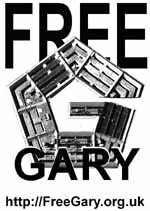This post first appeared on EcoSalon
1. Cradle to Cradle: Remaking the Way We Make Things by William McDonough & Michael Braungart. Why settle for a throwaway culture? This book is a must read because it inspires elegant design solutions, stating that every single product must either go back to the earth or back into industry to be made into something else. A revolutionary way of upgrading the Industrial Revolution – talk about life changing.
2. Introduction to Permaculture by Bill Mollison. The classic text on permaculture design (which is not limited to gardens, but can also be used to design homes, communities and societies in general). An excellent introduction for the aspiring student or someone who just wants to know what it’s all about.
3. The World Without Us by Alan Weisman. What exactly would happen to the earth if human life disappeared? The author explores a few different scenarios in great detail (including a suddenly depopulated Manhattan). Absolutely addictive reading.
4. Animal, Vegetable, Miracle: A Year of Food Life by Barbara Kingsolver. A great read for the locavores. The author spends a year eating only from her garden, or that which is locally grown or raised. A foodie’s delight, this book proves how richly one can live off the land.
5. Eating For Beauty by David Wolfe. Leading raw foodist David Wolfe takes that old adage “you are what you eat” to a new level. He describes how what you eat literally creates who you are, and which foods will create the most beautiful you – in body and in spirit.
6. Lifeplace: Bioregional Thought and Practice by Robert L. Thayer, Jr. In a world gone insanely global, this book takes us deeper into the microcosm. A bioregion is defined by nature, not by politics, and having intimate connection with your home means living within that context – historically, geographically and culturally.
7. Green Building & Remodeling For Dummies by Eric Corey Freed. Written by the founder of organicARCHITECT, this book is a comprehensive guide to green building materials and techniques, energy and water systems, and the pros and cons of everything. Check out a sample chapter here.
8. Gaia: A New Look at Life on Earth by James Lovelock. First published in 1979, this book sets forth the Gaia Hypothesis, stating that our planet is more than a sum of its resources, but rather a fully integrated living being, with systems of life more complex than previously imagined. I wonder what Gaia’s thinking about us now?
9. The Omnivore’s Dilemma: A Natural History of Four Meals by Michael Pollan. Follow a McDonald’s meal back to a cornfield in Iowa. Learn about the differences between large and small organic farms. See what it’s like to hunt and gather for oneself. Food is what builds our bodies – we ought to know what it takes to build our food.
10. Ecovillages: A Practical Guide to Sustainable Communities by Jan Martin Bang. Documenting some of the successful Ecovillages around the world, the author shows us how groups of people have come to together to live out the permaculture model in both rural and urban environments.
...MORE HERE...

















No comments:
Post a Comment